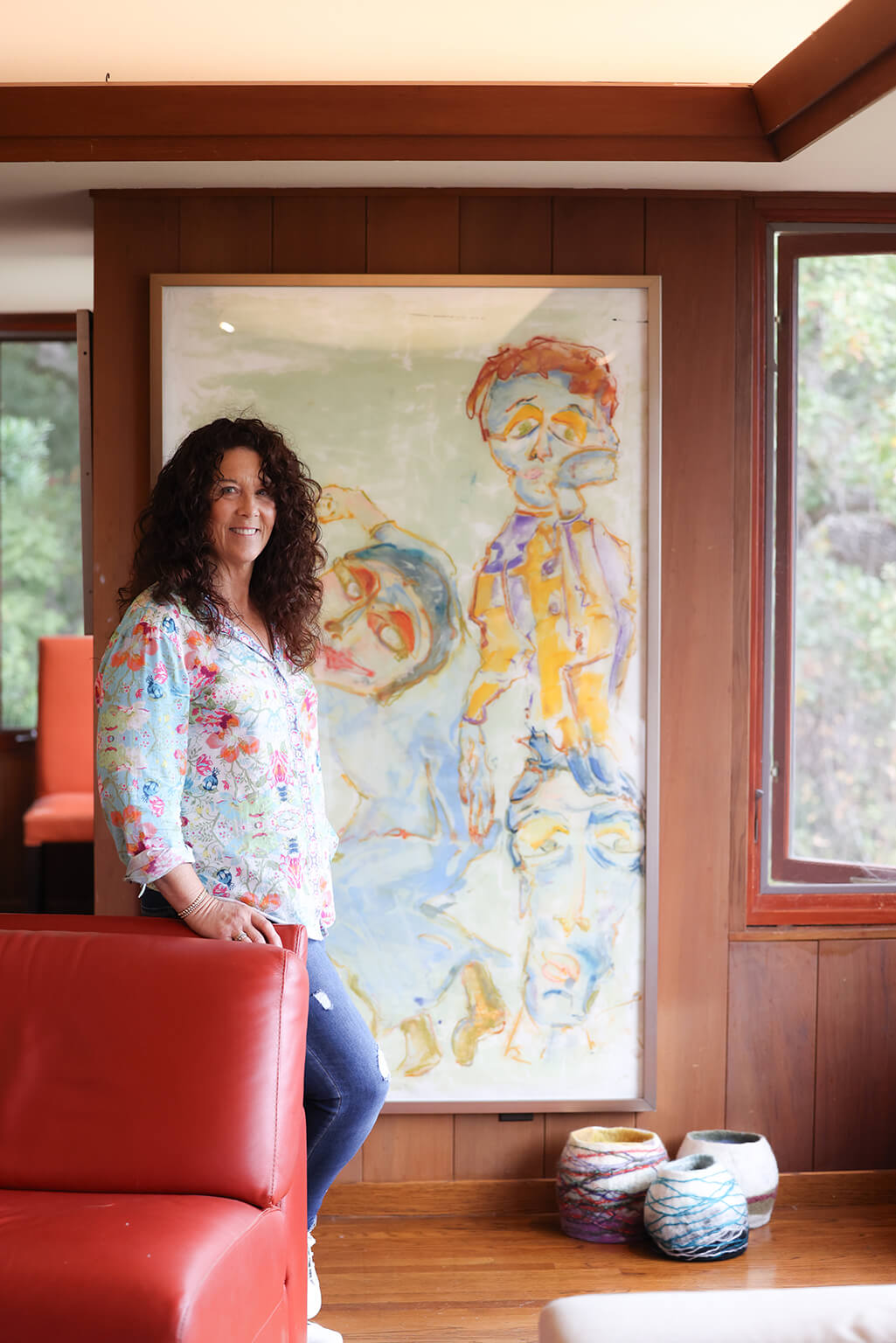Words by Sheryl Nonnenberg
Lonnie Zarem reflects a mix of roles and personas: former market research executive, wife, mother of three sons and now, professional fine artist. All of these life experiences have prepared her for the success she now enjoys as one of the most influential artists working in the medium of encaustic monotype.
Born in Southern California, Lonnie cites two strong influences on her artistic leanings: her father, a mechanical engineer who was “always doing stuff with his hands,” and her grandmother, who used to encourage her to draw “everything around her.” After taking the pragmatic route of majoring in economics at UC Irvine, Lonnie ran Technology Marketing Services in Studio City for a decade. When she moved to the Bay Area in 2000, she found herself reassessing her life and career choices.
“I always loved to draw,” she explains, adding that she made sure her kids had access to art materials—in the form of a table loaded with pens, crayons and paper. After the boys were tucked in bed, she’d take a turn. “There I would be at 3AM, playing with watercolors,” she recalls with a smile. It was time to pursue a new career in the arts.
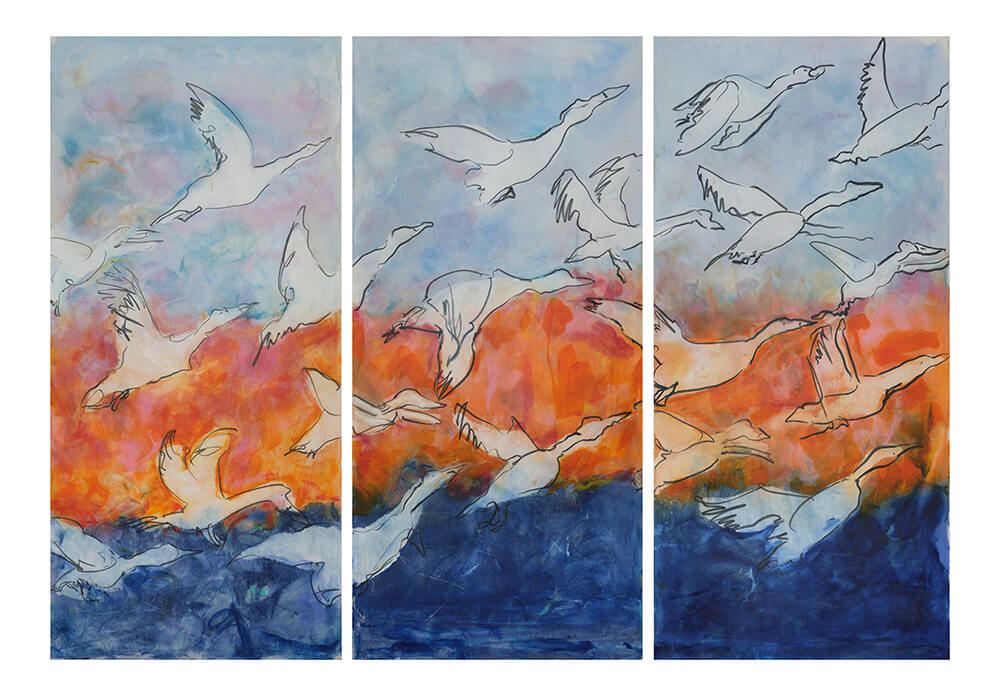
Prior to starting classes “where people tell you what you should be doing,” Lonnie gave herself a year to experiment and explore on her own. The result was a book of drawings, poems and paintings that remains a cherished keepsake. “It reminds me of what really works for me,” she says.
After earning her B.A. from San Jose State University’s School of Art and Design, Lonnie began as an oil painter, often working in a representational manner. Drawn to the medium of encaustic painting, which consists of beeswax, resin and pigment, her work became more abstract. Then, Lonnie heard of a new medium, encaustic monotype.
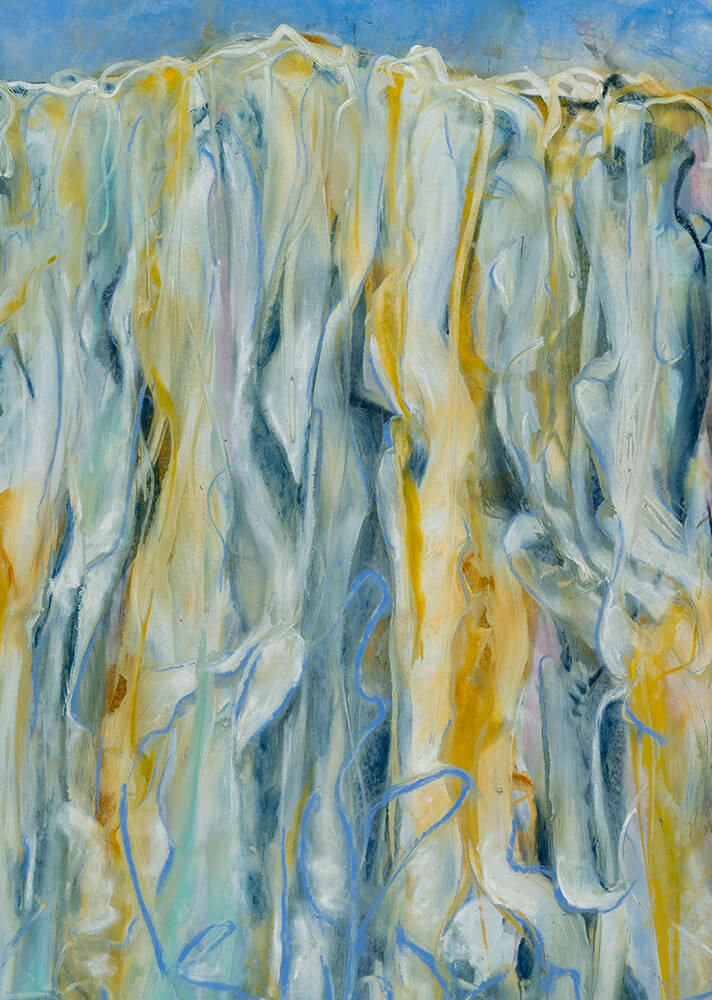
New Mexico artist Paula Roland pioneered the process, which entails, as Lonnie explains, “Creating an image by painting with blocks of pigmented wax on a hot flat plate, and then placing rice paper on it to absorb the wax image.” The result is a unique print that almost resembles batik, with overlapping layers of translucent color. After an intensive residency in New Mexico to learn the process, Lonnie was hooked.
“I think in layers and in a full range of colors,” she shares, “and the colors in encaustic monotype are magnificent—saturated and beautiful.” She also appreciates the tremendous latitude and inherent variability: “There are more possibilities and freedom in this medium; I am never bored.” Even after ten years, Lonnie says, every print still holds a surprise.
In addition to showing her work, Lonnie enjoys demonstrating the process. In September 2023, she held a solo exhibition of over 20 prints at Palo Alto’s Pacific Art League (PAL), marking the rollout of a one-of-a-kind, dedicated encaustic art center, funded by PAL and a grant from the International Encaustic Artists Project. At PAL’s Ramona Street studio, Lonnie is able to instruct 10 students, each equipped with their own “hot box.”
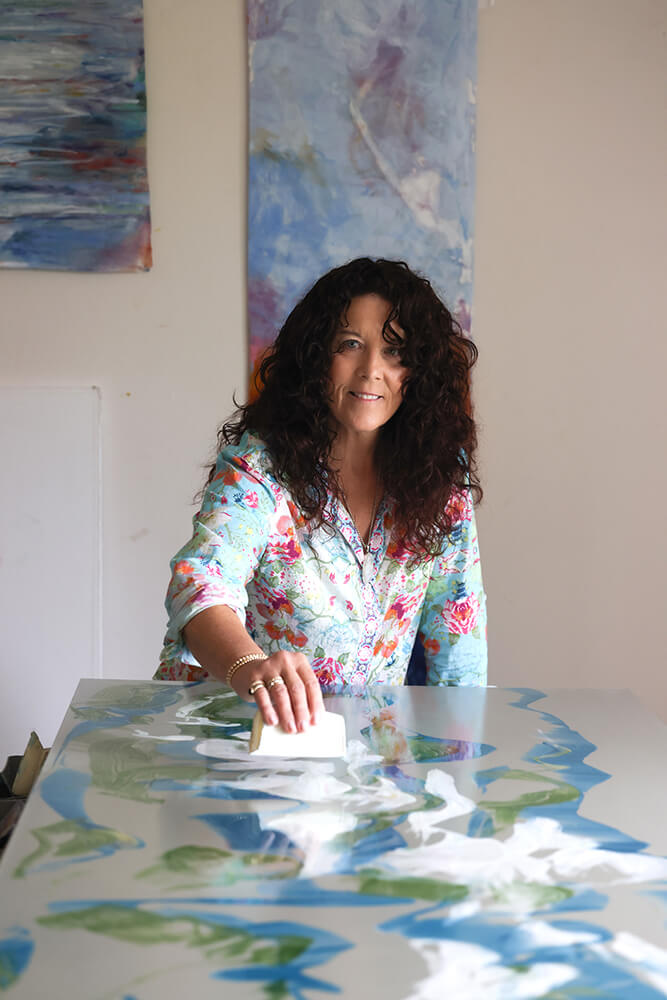
Lonnie credits this development to her reputation for taking an experimental approach to the medium. Thanks to the custom creation of a super-sized hot box, she’s able to work in very large scale, and she pushes the boundaries with layers of color. She also creates more representational imagery through the use of charcoal or graphite lines. “There’s a lot to teach, in terms of scale,” she observes, “and students can get so much out of encaustic because there are so many techniques.”
Her own work is inspired largely by nature and the experiences she has had while hiking, traveling or enjoying the panoramic views from the window of her Los Altos home. A recent trip to Iceland resulted in a series of prints that reflect the wild, dramatic scenery. Back in the studio, she used her layering expertise to depict the scudding white clouds that overlay the marine-blue skies. Streams of translucent shades of blue, gold and green evoke the feeling of thundering waterfalls. “I have been told my work is very energetic and brings people into it—which is exactly what I want because that is how I feel, like I am in it again,” she says.
Because Lonnie works from memory, a simple hike in the hills or fishing in a local stream can become subject matter. In Sky Through the Trees, she recaptured a childhood memory of lying in the grass and gazing upward. She loves testing limits, which she did in Migration II. In this large-scale (96” x 66”) triptych, a flock of pink flamingos takes flight across the three sections. Because she works alone, she had to develop strategies for pulling the print without losing the imagery.
How does she know when a print is done? “I need to feel I have been somewhere, that I have experienced/re-experienced a moment in nature, a moment in my imagination,” she summarizes.
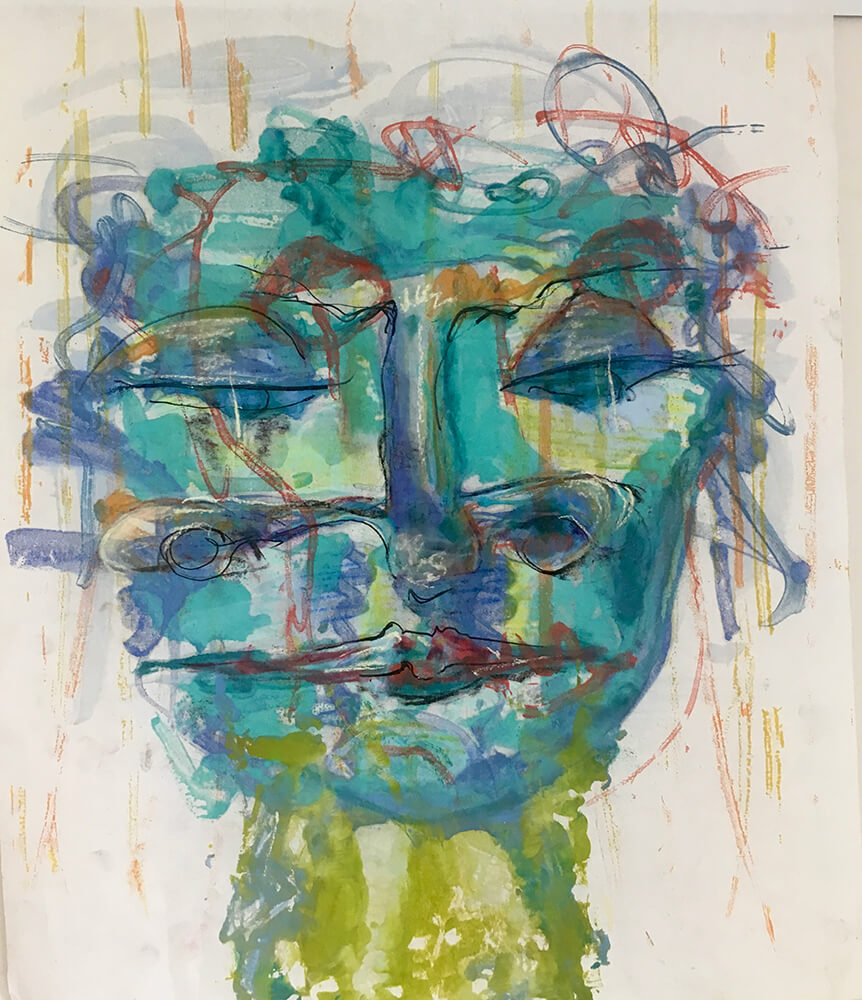
In addition to being a well-respected art instructor, Lonnie excels at marketing her work, but in her own idiosyncratic way. While some artists rely on social media, she prefers to sell through face-to-face interactions. “I like a situation where people know me and what I do,” she says. To that end, she holds salons, where her art is displayed and she can offer demonstrations of the monotype process. “I have sold more work out of my home than you can imagine,” she laughs. Another technique is approaching a gallery and offering to mount a one- or two-day pop-up show between exhibitions. “I give people a lot of access to me,” she notes. “I like the human part of it all.”
Using encaustic monotype to capture the beauty of nature, however transitory and ephemeral, seems to provide Lonnie with unending inspiration. “I have never had anything so lined up with what I think and feel, how it comes out of my fingers and what shows up at the end,” she reflects. “It’s like they all work together for me.”


